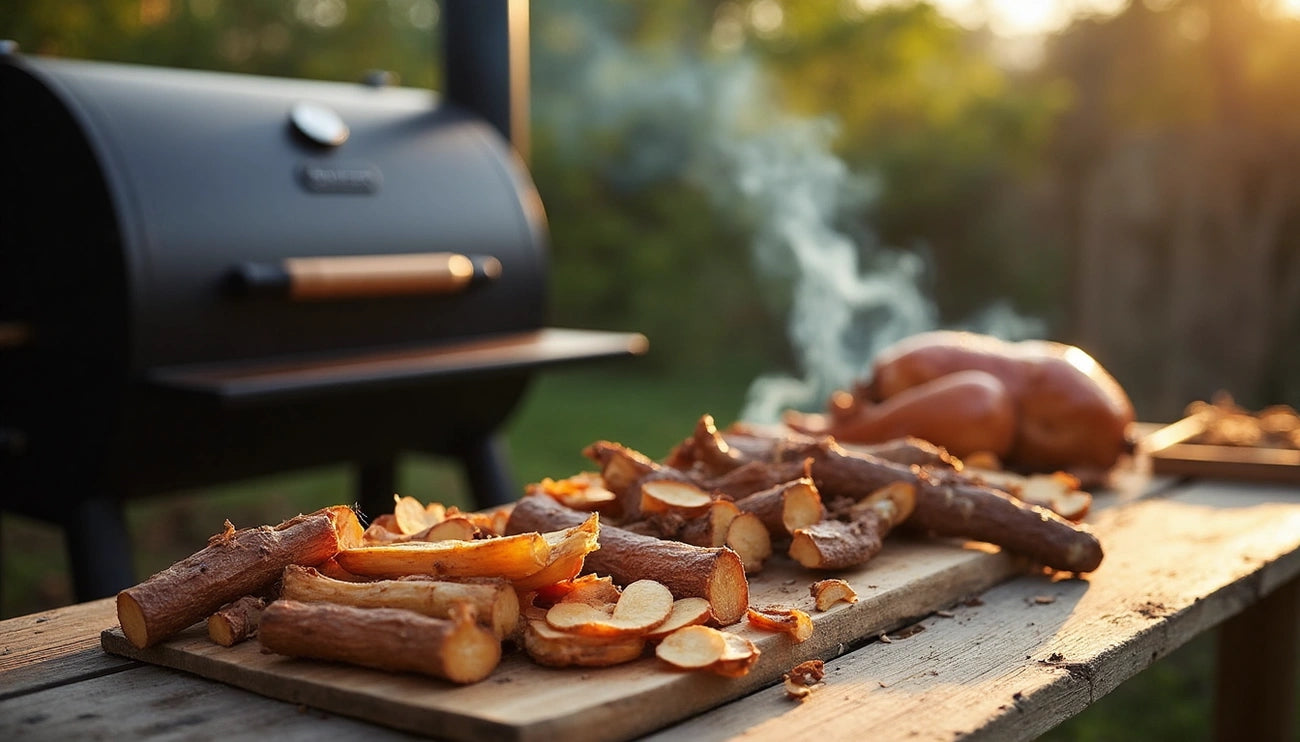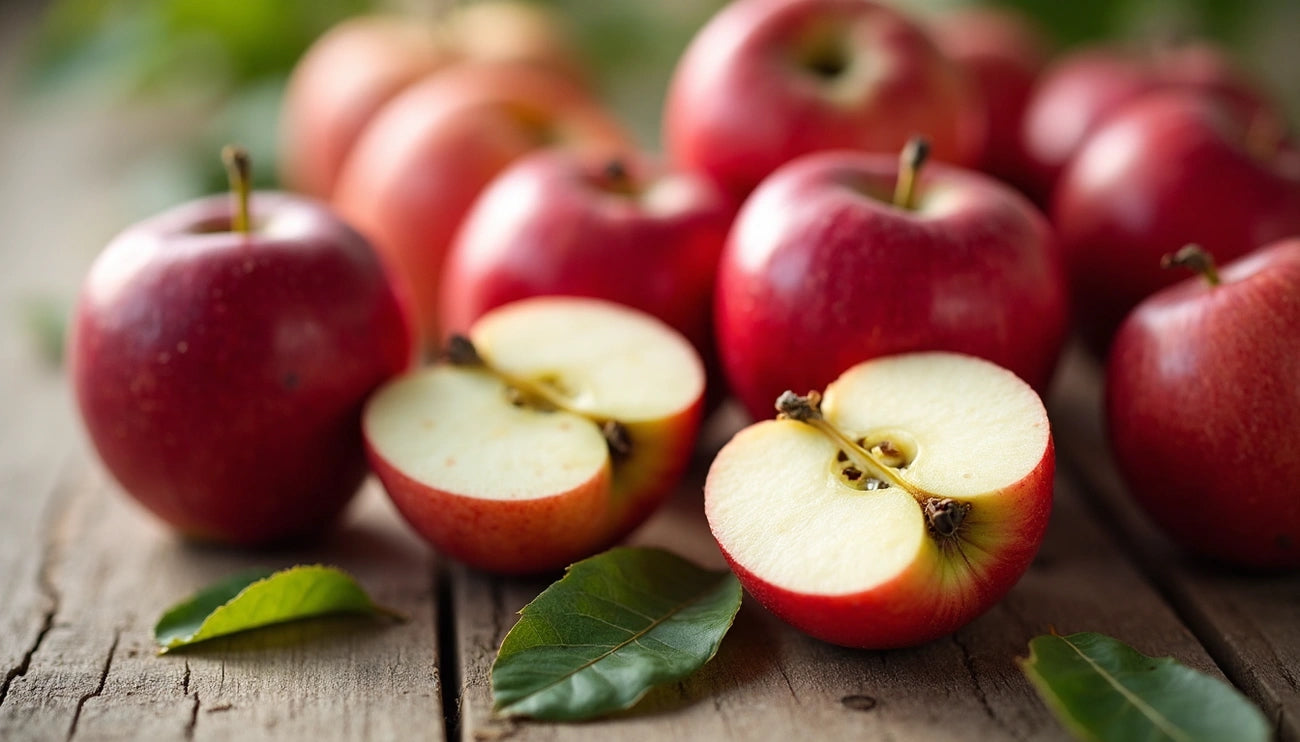Did you know that crabapples have a reputation for being tart and bitter, but there's actually a lot of variation in their flavors, with some even being pleasantly sweet?
Despite their small size, these fruits pack a punch when transformed into homemade wine. Every year, I harvest as much as my arms can handle from the crabapple trees at my disposal. Last season, I managed to collect roughly 100-120 pounds of fresh, bright red crabapples without even using a ladder!
If you're wondering how to make crabapple wine yourself, you'll need about 10-12 pounds of crabapples for every gallon of wine. Most crabapple varieties will create a palatable, fairly dry white wine, but you'll also need additional ingredients like sugar to balance the tartness. For every gallon, plan on using 2-3 pounds of sugar.
The process is rewarding but requires patience. After preparation and fermentation, your crabapple wine will benefit from aging in the bottle for at least six months. When I made my first batch, I started by tasting one fruit right off the tree - it was tart but much more easily edible than any other crabapple I'd tried before.
In this guide, I'll walk you through the complete process of creating your own delicious crabapple wine, from selecting the right fruits to bottling the finished product. Let's transform those overlooked fruits into something truly special!
Gathering Ingredients and Equipment
Let's gather everything we'll need for a successful batch of crabapple wine. Proper preparation makes the entire winemaking process smoother and more enjoyable.
Essential ingredients for crabapple wine
For a one-gallon batch of crabapple wine, I gather:
- 10-12 pounds of ripe, unblemished crabapples
- 2-3 pounds of granulated sugar
- Water (enough to cover the fruit in your fermenter)
- 1 teaspoon yeast nutrient
- ½ teaspoon pectic enzyme
- ½ teaspoon acid blend (for balancing flavor)
- Optional additions: raisins (¼-1 pound), cinnamon sticks, or orange zest for complexity
I always look for crabapples that are fully ripe since they contain the highest sugar content and lowest acidity—perfect for winemaking. If you don’t already have a steady source, planting your own tree is a rewarding option, and you can easily browse our selection of crabapple trees to get started.
Recommended wine yeast types
Selecting the right yeast significantly affects your wine's character. For crabapple wine, I recommend:
- Lalvin K1V-1116: Works well in difficult fermenting conditions while adding fruity notes
- Red Star Premier Rouge: Enhances fruity complexity, ideal for crabapple's spicy character
- Red Star Cote des Blancs: Brings out sweetness and fruit character, excellent for apple wines
- Champagne yeast: Creates a drier finish with high alcohol tolerance (15-18%)
Basic tools and containers you'll need
The equipment needed includes:
- Primary fermenter: A food-grade plastic bucket (7-8 gallon) with lid
- Secondary fermenter: One-gallon glass carboy with narrow neck
- Airlock and rubber stopper (keeps air out while letting CO2 escape)
- Brewing siphon for transferring wine without disturbing sediment
- Hydrometer (essential for measuring sugar content)
- Sanitizer (crucial for preventing contamination)
- Wine bottles, corks, and corker for the finished product
Furthermore, you'll need basic kitchen tools like a large pot, strainer, and possibly a fruit press if you're planning to grow your own fruit supply for future winemaking adventures.
Making the Must and Primary Fermentation
The transformation of crabapples into wine begins with proper preparation of the must—the mixture of fruit, water, and sugar that will eventually become your wine. This crucial stage sets the foundation for successful fermentation.
Crushing crabapples and dissolving sugar
Initially, I thoroughly wash the crabapples and remove all stems and leaves to prevent off-flavors. Many winemakers recommend freezing the crabapples for about a week, as this softens the fruit and reduces pectin content by approximately 50%. After thawing, I place them in my sanitized primary fermenter.
Crushing techniques vary based on equipment available:
- Use a potato masher or rolling pin for smaller batches
- Place apples in a bin and crush with hardwood for larger amounts
- Utilize an apple crusher or press for efficiency
Remember to avoid crushing the seeds as this can release bitter compounds. Subsequently, I dissolve 2-3 pounds of sugar in boiling water, then pour this solution over the crushed apples. Allow this mixture to cool completely.
Adding pectic enzyme and yeast nutrient
Once the sugar solution has cooled to lukewarm temperature, I add one teaspoon of pectic enzyme. This enzyme breaks down the cell walls of the fruit, helping to extract juice and prevent cloudy wine. Afterward, add one crushed Campden tablet to kill wild yeasts and bacteria, then cover loosely and wait 24 hours.
The following day, I add the wine yeast (previously rehydrated in room-temperature water for 10 minutes) along with yeast nutrient. This nutrient ensures healthy yeast activity throughout fermentation. Some recipes suggest adding raisins as a natural yeast nutrient source.
Fermenting with airlock: what to expect
During primary fermentation, I stir the must daily for 5-7 days. This aerates the mixture and distributes yeast evenly. Throughout this period, you should notice:
- Bubbles forming on the surface within 2-3 days
- A "cap" of fruit pulp rising to the top
- Active bubbling as fermentation progresses
- Gradual slowing of activity toward day 7
After approximately one week, strain out the fruit pulp and transfer the liquid to your secondary fermenter. At this point, fit an airlock to prevent oxygen exposure while allowing carbon dioxide to escape. This marks the transition to secondary fermentation, where your crabapple wine will continue developing its character.
Secondary Fermentation and Flavor Control
After active fermentation slows, your crabapple wine enters a crucial development phase. Patience becomes your greatest ally now.
How to rack and clarify your wine
Once bubbling subsides, I rack the wine (siphon it to a clean vessel), leaving sediment behind. This initial racking occurs about three weeks after active fermentation stops. Consequently, I rack every 2-3 months until the wine clears naturally. For stubborn cloudiness, fining agents can help drag suspended particles to the bottom.
Using Campden tablets and potassium sorbate
Before bottling or back-sweetening, stabilization is essential. I add one crushed Campden tablet per gallon along with ½ teaspoon potassium sorbate. This combination is vital—Campden kills bacteria while potassium sorbate prevents yeast reproduction. Hence, always use both together to avoid a geranium-like off-flavor.
Adjusting sweetness and acidity
To back-sweeten crabapple wine:
- First stabilize completely
- Create simple syrup (equal parts sugar and water)
- Start with ½ cup sugar per gallon, adjusting to taste
Alternatively, honey creates a smoother profile albeit with more sediment. For sweetening with honey, mix ½ cup with one cup of wine before adding it back. Monitor the wine for another week afterward to ensure fermentation doesn't restart.
The natural malic acid in crabapples creates a pleasant tartness, making cold stabilization unnecessary.
Bottling, Aging, and Serving Tips
The final step in your crabapple winemaking journey involves proper bottling and aging—crucial factors that determine your wine's ultimate quality.
How long to age crabapple wine
For optimal flavor development, age your crabapple wine for at least 6 months. Certainly, some winemakers recommend extending this to a full year for superior quality. Throughout aging, harsh flavors smooth out markedly, allowing the wine's bouquet and character to fully develop. Store bottles in a cool, dark place at approximately 60°F, ideally in a clean, dry basement shielded from light.
Best bottles and corking methods
Select bottles with a standard "cork-finish" (3/4 inch opening). For sealing, straight corks provide better protection than tapered varieties. Size #9 corks work well with standard wine bottles. When filling, leave approximately 1-1.5 inches of headspace below where the cork will sit. Keep bottles upright for 24 hours after corking to allow air escape, then store horizontally to keep corks moist.
Serving temperature and food pairings
Serve crabapple wine chilled (45-50°F) in tulip-shaped glasses to showcase its color and aroma. This refreshing wine pairs excellently with:
- White meats (chicken and pork)
- Various seafood dishes
- Cheeses including cheddar, gouda, and brie
Using crabapple wine in cooking
Beyond drinking, crabapple wine adds wonderful flavor to cooking. Incorporate it into sauces, marinades, and desserts. It works particularly well in savory dishes—try it with a pork roast for a delightful flavor combination.
Conclusion
Making crabapple wine transforms often overlooked fruits into a delightful homemade beverage worth sharing with friends and family. Throughout this guide, we've explored every step of the winemaking journey, from selecting the right fruit to properly aging and serving your creation.
Patience certainly stands as the most crucial ingredient in this process. Your efforts will eventually reward you with a beautifully colored wine that balances tartness with subtle sweetness. After waiting those recommended six months of aging, you'll undoubtedly appreciate how time mellows the initially sharp flavors into something truly special.
Remember that each batch of crabapple wine tells its own story. Weather conditions, fruit varieties, and even minor variations in your process all contribute to creating a unique vintage. This unpredictability actually adds to the charm of home winemaking.
Crabapple trees grow abundantly in many regions, offering free access to this wonderful winemaking resource. Last season alone, my 100+ pounds harvest converted into numerous bottles that brightened winter gatherings and made thoughtful handcrafted gifts.
Whether you enjoy your crabapple wine chilled on a summer evening, paired with a delicious meal, or incorporated into your cooking, this homemade creation represents something truly special. The satisfaction of raising a glass filled with wine you crafted from garden to glass simply cannot be matched by any store-bought alternative.
Why not start your own crabapple winemaking tradition this season? Those small, tart fruits hanging on neighborhood trees now hold new potential as you look at them through a winemaker's eyes.
FAQs
Q1. How many crabapples do I need to make wine? You'll need about 10-12 pounds of crabapples for every gallon of wine you want to make. Be sure to select ripe, unblemished fruits for the best results.
Q2. What type of yeast is best for crabapple wine? Several yeast types work well for crabapple wine, including Lalvin K1V-1116, Red Star Premier Rouge, Red Star Cote des Blancs, and Champagne yeast. Each imparts slightly different characteristics to the final product.
Q3. How long should I age crabapple wine before drinking? It's recommended to age crabapple wine for at least 6 months, though some winemakers suggest aging for a full year to achieve the best flavor. Aging allows harsh flavors to smooth out and the wine's character to fully develop.
Q4. Can I adjust the sweetness of my crabapple wine? Yes, you can adjust the sweetness of your crabapple wine. After stabilizing with Campden tablets and potassium sorbate, you can back-sweeten using simple syrup or honey. Start with about 1/2 cup of sugar per gallon and adjust to taste.
Q5. What foods pair well with crabapple wine? Crabapple wine pairs excellently with white meats like chicken and pork, various seafood dishes, and cheeses such as cheddar, gouda, and brie. It can also be used in cooking to add flavor to sauces, marinades, and desserts.




Leave a comment
This site is protected by hCaptcha and the hCaptcha Privacy Policy and Terms of Service apply.